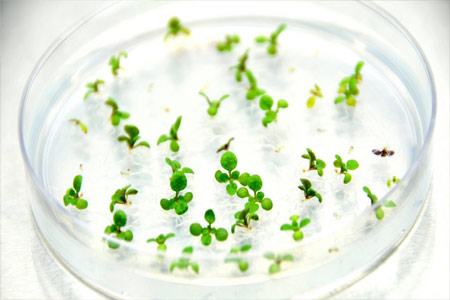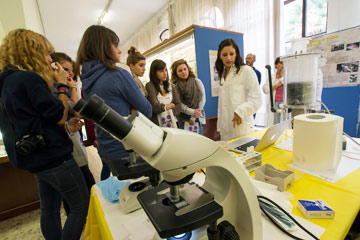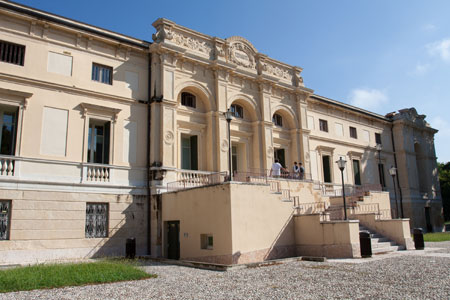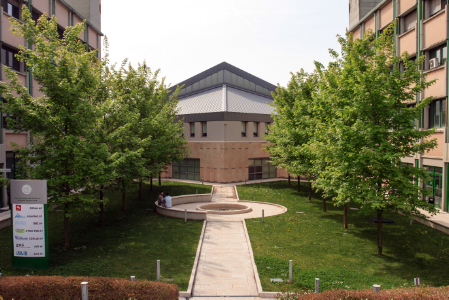Syllabus
Module: Fisiologia vegetale
-------
Lectures:
1Introduction: what’s plant physiology and interaction with others disciplines. Methods of study. Implications and adaptations typical of autothophy and eterothrophy. Cytoplasm/mass ration in plants and animals.
Major difference between animal and plant cell.
Water. Osmosys, mass flow, water potential. Root absorption, Xilem: structure and function. Water flow in the xylem. "Cohesion tension theory". Cavitation and recovery. Origino f the absorption strength. Leaf, stomata and traspiration.
Structure and function of the biological membranes: ion transport, Energy dependent pransport, Nerst equativo, mechanismsms of solute transport.
Phisiology of mineral absorption, macro- and micro-nutrients. essential elements.
Pholem: structure and function. Pressure-flow hypothesis. loading , unloading and mass flow..
Cellulose biosynthesis and formation of cell wall. Extensibility, acid growth, expansins, polar growth. Role of Ca2+.
Cell cycle and growth: seed development, dormance and germination. Synthesis/degradation of recserves.
Perception and transmission of signals.
Plant Hormons Auxins, Abscissic acid (ABA), gibberellins, brassinosteroid, ethylene, cytokinins.
Phytochrome: photoactive proteins, light as information, photoperiodism.
Cryptochrome: blue and UVA response. Regulation of stomata opening. phototropism.
Practical course:
- Model systems for physiological genetic: Chlamydomonas reinhardtii, Physcomitrella patens, Arabidopsis thaliana, Hordeum vulgare. Homologous and heterologous recombinationa Aploidy e diploidy. Autotrophy and mixotrophy. +/- of the different systems.
-
Insertional and chimica mutagenesys
Phenotypic selection.
Physiological characterization of mutants: biophysical methods: fluorescence.
Biochemical characterization of mutants: immunoblotting against candidate gene products.
Module: Fisiologia vegetale (laboratorio)
-------
--
Module: Biochimica vegetale
-------
Program of the course
1. Plastids: structure and functional specialization. Chloroplasts, biosynthesis of chlorophylls and carotenoids, biosynthesis of lipids, structure of the plastidial genome and gene expression, import of proteins.
2. Photosynthesis: light absorption, fate of the excited states, role of chlorophylls and carotenoids, the antenna system of higher plants, kinetics of energy transfer between chromophores.
3. Photosynthesis: the reaction centers, electron transfer through the thylakoid membrane, PSII and PSI, cycle Q, water oxidation, synthesis of ATP, lateral heterogeneity and state transitions, photoxidative stress, Chlamydomonas reinhardtii as source of bio-hydrogen.
4. Photosynthesis: using chlorophyll fluorescence to study the photosynthetic mechanisms (damages to the photosynthetic apparatus, Non-Photochemical Quenching (NPQ), state transitions …) or to facilitate the screening of a population of mutants.
5. Photosynthesis: CO2 organication in C3, C4 and CAM plants, the photorespiratory pathway.
6. Nitrogen metabolism: endosymbiotic fixation of N2, structure and function of the radical nodules, absorption and reduction of nitrate, reduction of nitrite.
7. Sulfur metabolism: chemistry of sulfur, absorption, transport and assimilation of the sulfate, role of the glutathione, phytochelatins.
8. Regulation and interconnection of metabolic pathways: carbohydrates metabolism, synthesis and degradation of starch and sucrose, interactions between hexoses phospate pool and pentoses phosphate pool, regulation of carbon assimilation, metabolism control between cytosol and chloroplast, gluconeogenesis.
9. Aminoacids biosynthesis: assimilation of inorganic nitrogen, synthesis of aromatic aa, synthesis of sulfur-containing aa, general view on biosynthesis of aspartate-derived aa, branched chain aa, proline, hystidine, arginine, interactions between nitrate assimilation and carbon metabolism, role of mitochondria in supporting the aa biosynthetic pathways into the plastid.
10. Mitochondria of higher plants.
11. Secondary metabolism: activation of the secondary metabolism and role of reactive oxygen specie (ROS), biosynthesis of IPP (chloroplastic and cytosolic pathways), biosynthesis of terpenoids, structure and function of alkaloids, phenylpropanoids, lignins, flavonoids, coumarins, cyanogenic glycosides.







